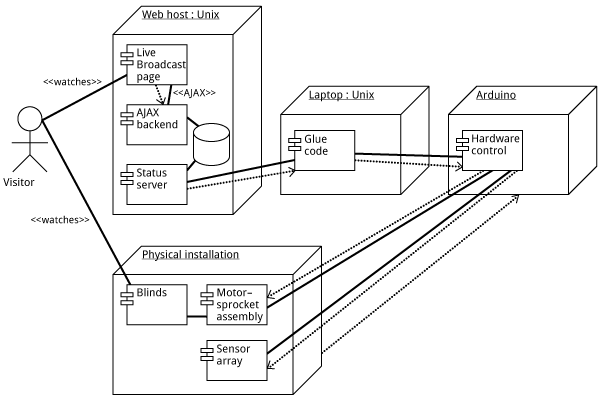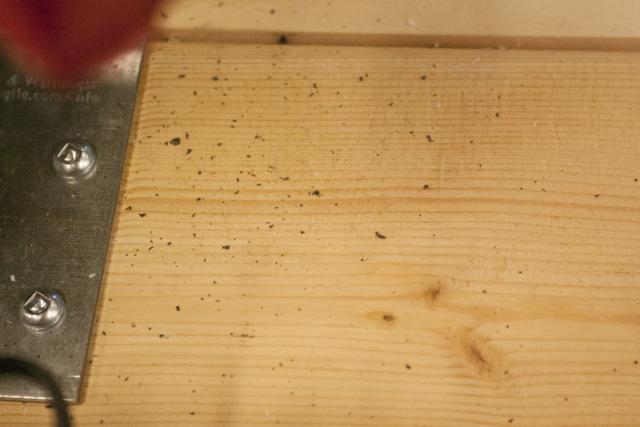i just realized i should not have thrown away my many failed casts
Submitted by Ambrose on Sat, 2014-04-12 23:42
Earlier today I mentioned to Martha (the one who’s doing the plates) that things aren’t looking good for me because I’m having too many rejects. (“I don’t know. Maybe I’m trying to do something that’s really hard.”) And what did she say? She’s having lots of rejects too. “This is ceramics,” she quipped.
But throwing isn’t like this. I’ve never had so many rejects when I throw and I can even reclaim the clay if a piece turns out to be a reject, so long as it hasn’t been fired. But for my thesis MRP I find the number of failed casts simply staggering. I was mentioning to Danielle (I think) yesterday that I was starting to worry about running out of slip, even though I have been using the studio’s giant bucket of reclaimed slip instead of my own. At this rate I will very soon use up all the slip in there.
So a couple of hours ago a thought suddenly came upon me: What if I translated those damaged casts back into print? I even did a mental rundown of what I would do to the failed cast I was holding.
But obviously, I didn’t think too much about it, because right afterwards I just threw that failed cast into the trash can.
Then while I was on my way home I suddenly realized I should not have thrown away any of those casts because they can be repurposed as an installation. And—imagine my surprise—that would even be a very “32 Pigeons” installation.
Martha thought I was in Sculpture and Installation. I guess there’s a reason. Or maybe it was Martha’s guess that was what got my idea going.

 How should we even describe this as an “alt text”? (Let’s ignore text browser users for the moment.) Describing the picture certainly wouldn’t work; what matters are not the visual elements themselves, but their relationships to each other.
Even worse: Imagine this being exported into PDF (or SVG, or EPS), then embedded into InDesign. Suppose the InDesign file is going to ultimately end up as an accessible PDF. But the text in the diagram is going to be a jumbled mess. So what accessibility are we talking about? Are we deluding ourselves?
This has serious implications: Imagine, for example, a piece of online instructional material full of such diagrams. Under the AODA organizations are supposed to be able to supply this in an “accessible format.” What does it even mean for this to be accessible?
How should we even describe this as an “alt text”? (Let’s ignore text browser users for the moment.) Describing the picture certainly wouldn’t work; what matters are not the visual elements themselves, but their relationships to each other.
Even worse: Imagine this being exported into PDF (or SVG, or EPS), then embedded into InDesign. Suppose the InDesign file is going to ultimately end up as an accessible PDF. But the text in the diagram is going to be a jumbled mess. So what accessibility are we talking about? Are we deluding ourselves?
This has serious implications: Imagine, for example, a piece of online instructional material full of such diagrams. Under the AODA organizations are supposed to be able to supply this in an “accessible format.” What does it even mean for this to be accessible?
 “Old media requires lubrication.”
This was one of the answers to the fake questionnaire I was given at Night Kitchen during last year’s Nuit Blanche. Back then the answer didn’t really make much sense to me, and in fact I thought the answer was bizarre. But of course, I hadn’t been involved in any “old media” creation that would have required lubrication.
Imagine how I felt when I had left the installation turned on for the night and then discovered bits of the sprocket wheel on the wooden frame. I was so glad the wheel had not been destroyed.
So I guess I can now sympathize with that answer to that fake question: Old media does require lubrication. It probably requires daily lubrication, even. But does that mean our installation, with such a strong electronics component, is still “old media”? So “new media” is virtual only? I don’t know if I can side with this conclusion, yet.
“Old media requires lubrication.”
This was one of the answers to the fake questionnaire I was given at Night Kitchen during last year’s Nuit Blanche. Back then the answer didn’t really make much sense to me, and in fact I thought the answer was bizarre. But of course, I hadn’t been involved in any “old media” creation that would have required lubrication.
Imagine how I felt when I had left the installation turned on for the night and then discovered bits of the sprocket wheel on the wooden frame. I was so glad the wheel had not been destroyed.
So I guess I can now sympathize with that answer to that fake question: Old media does require lubrication. It probably requires daily lubrication, even. But does that mean our installation, with such a strong electronics component, is still “old media”? So “new media” is virtual only? I don’t know if I can side with this conclusion, yet.(cropped)_1534.preview.JPG) When people saw our Blind Reading installation, they often ask, “How does it work?”
The fact that the piece is an art installation and not a design artefact must not be obvious. Even the speeches alluded to results of design research (when there is, as far as I can tell, only one product design presentation in the whole exhibition). Even
When people saw our Blind Reading installation, they often ask, “How does it work?”
The fact that the piece is an art installation and not a design artefact must not be obvious. Even the speeches alluded to results of design research (when there is, as far as I can tell, only one product design presentation in the whole exhibition). Even 